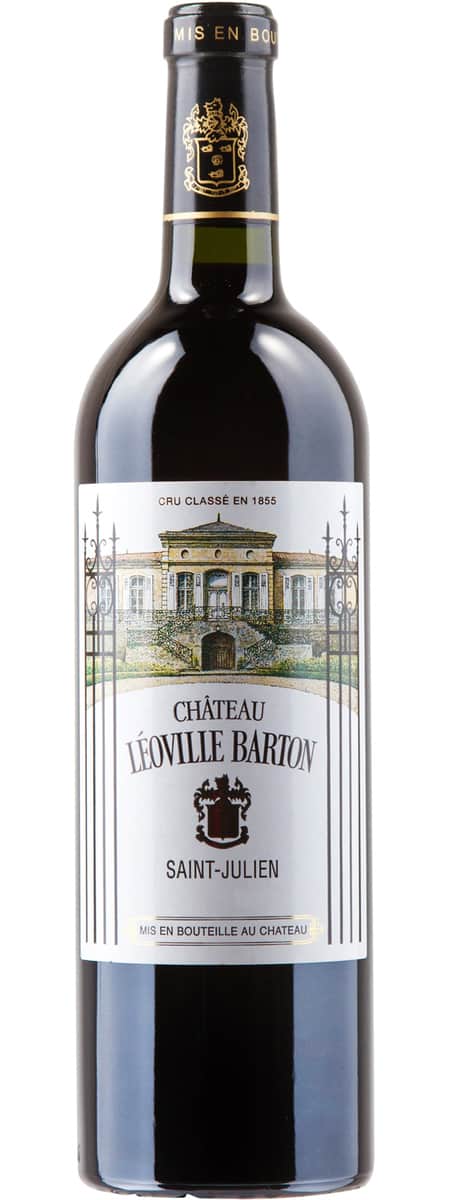Château Léoville-Barton
The Chateau Leoville - Barton is one of the most famous wineries of Bordeaux. Since the classification of 1855, the winery is classified as Deuxième Grand Cru Classé, second- highest level of classification.
It is located in Saint -Julien, Pauillac in close proximity to the place where the " Route du Vin ", the department of road No.2.
Wine
The three goods Leoville (las Cases, Barton and Poyferré ) belonged together until the 18th century. Barton is the smallest of them and made the second best wine behind Las Cases.
The wine of Barton will be expanded to the neighboring Château Langoa - Barton, while fully protecting the separation of the differently classified growths. Both goods are owned by the Irish -born wine merchant family Barton. The owner, Anthony Barton, is a man in his seventies, one original and one of the great lords of the Bordeaux wine. He is a very entertaining man, a lot of anecdotes are known by him. The most famous is probably his assessment of the Double Magnum bottle:
" A magnum? Just the right size for an evening out. Assuming you start with a champagne, the menu you end up with a Sauternes, and you are alone at home ... "
The best ever resulting wines are so far from the vintages 1990 and 1996 and especially 2000 ( 96 of a possible 100 points after the wine rating by Robert Parker). A bottle of these cohorts are rarely below 120 euros to buy (as of 2006).
Chateau Leoville - Barton is accompanied and advised by the oenologist Jacques Boissenot and his son Eric.
History
The vineyards of the Château are part of the once great estate of Leoville: early 17th century included the lands along the Gironde to Seigneurie de Lamarque and it was a credit to the Dutch to have drained the wetlands along the river. On an early drained area on an elevated gravel knoll 1638 first land were created in the year. From the second half of the 17th century, the family de Moytié put on first vineyards. Later, the gravel knoll was named Mont Moytié. In 1707 the politician and President of the Parliament of Bordeaux, took over the property and bequeathed him later to his two daughters. One of the women married the influential Blaise Antoine Alexandre de Gasq, Seigneur of Leoville and also a member of the Parliament of Bordeaux. After a Erbstreiterei the daughters Moytiés succeeded de Gasq to unite the separate possessions again. The areas ranged from Château Beychevelle in the south up to Château Latour in Pauillac in the north.
De Gasq died childless in 1769 and the Leoville - owned went to the Erbgemeinschaft four nephews, chaired by the Marquis de Las Cases Beauvoir. Was administered the property nor by Jean -Pierre d' Abbadie and by Bernard and Jean -Joseph d' Alozier. During the turmoil of the French Revolution, the Marquis had to flee the country. He succeeded, however, losing his possessions not as common ( Bien national). He separated only by one fourth of the land which was later shaped by Hugh Barton at Chateau Leoville - Barton.
The son of the Marquis of Pierre -Jean de Las Cases, Maréchal de camp led the fate of the remaining manor from 1815. In 1840 the property was, however, further divided as part of the success. While Pierre -Jean kept nearly two-thirds ( Chateau Leoville -las- Cases), was transferred to the other third of his sister Jeanne de Las -Cases. Through the marriage of Jeanne with Jean -Marie de Poyferré the name of Chateau Leoville - Poyferré arose.
The Barton Family
The viticultural history of the Barton family can be traced back to the year 1725. The young Irishman Thomas Barton ( born December 21, 1694 in Drunkeeran at Enniskillen in County Fermanagh, died October 18, 1780 ) moved with his family to the area of Bordeaux on and founded a wine business. He supplied especially the Dutch and the Irish market. Already in 1728 he exported bulk wine in 2700, and in 1745 he was already the most important wine merchant of Bordeaux. His business success allowed the French called Tom Barton Le Château Saint -Estèphe Bosq to acquire its own vineyard.
His grandson Hugh Barton (1766-1854) made dynamic trade further when he teamed up with the French shipowner Daniel Guestier. Guestier ran the ship Le Grand Nancy, that could break the sea blockade off the French coast because of its speed. Therefore, the trading firm Barton & Guestier could almost unscathed carry on trade in wine in full.
During the French Revolution, Hugh Barton had a short stay in prison in 1793 to leave the country for safety reasons and his partner Guestier ran the business from time to time alone. After returning from Hugh he bought in 1821, the Château Langoa - Barton and only five years later he earned a part of Leoville - possession and founded Chateau Leoville - Barton.










